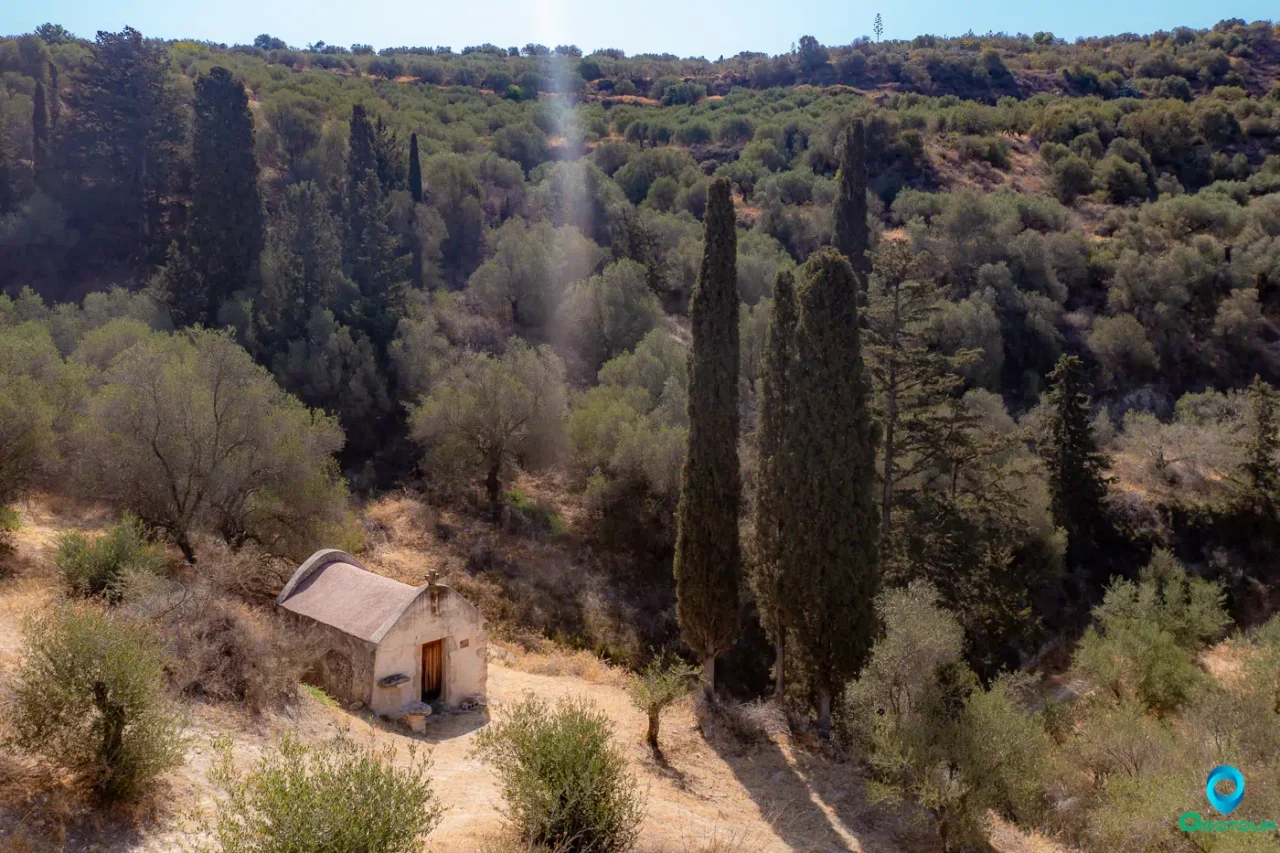
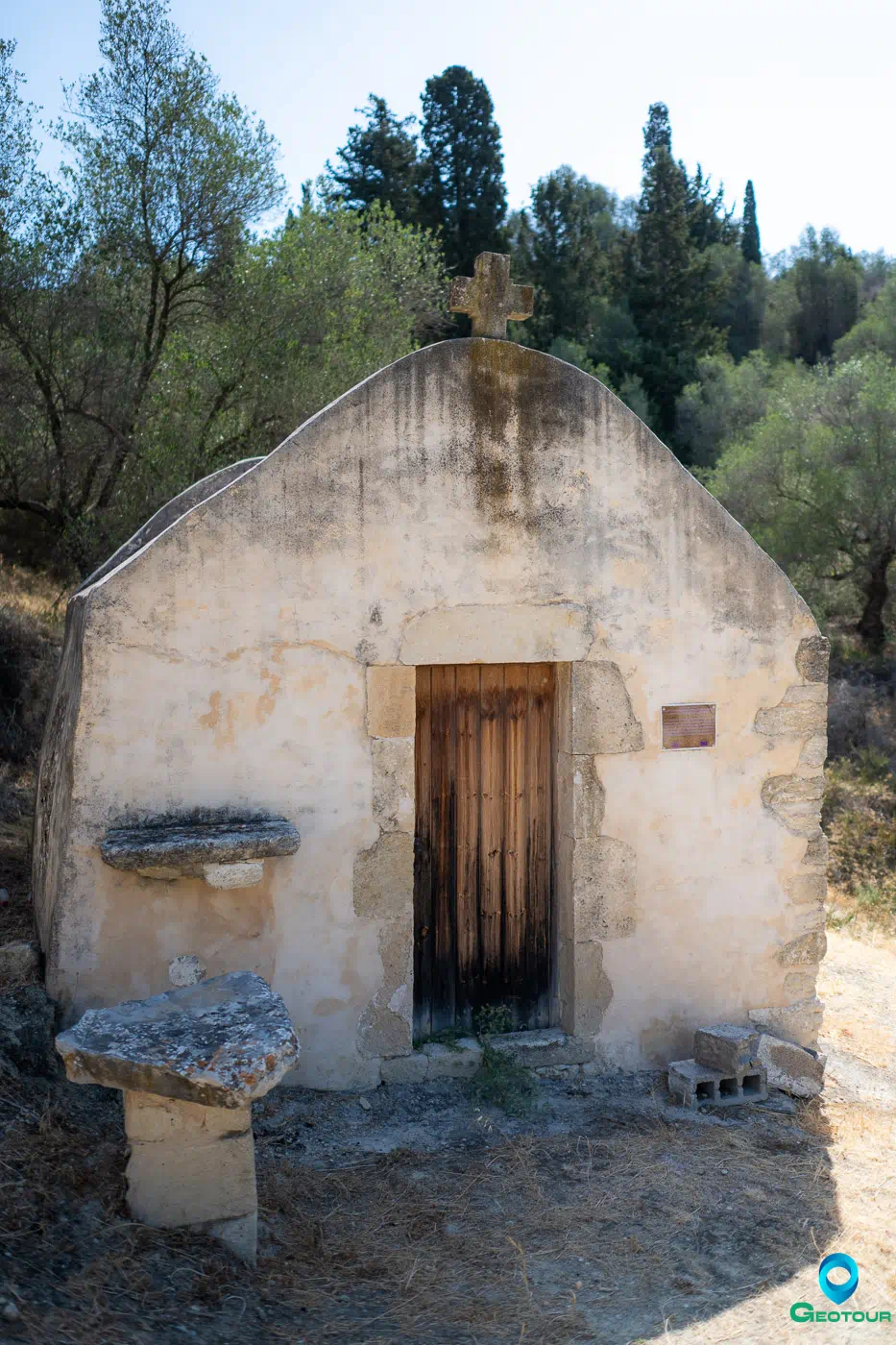
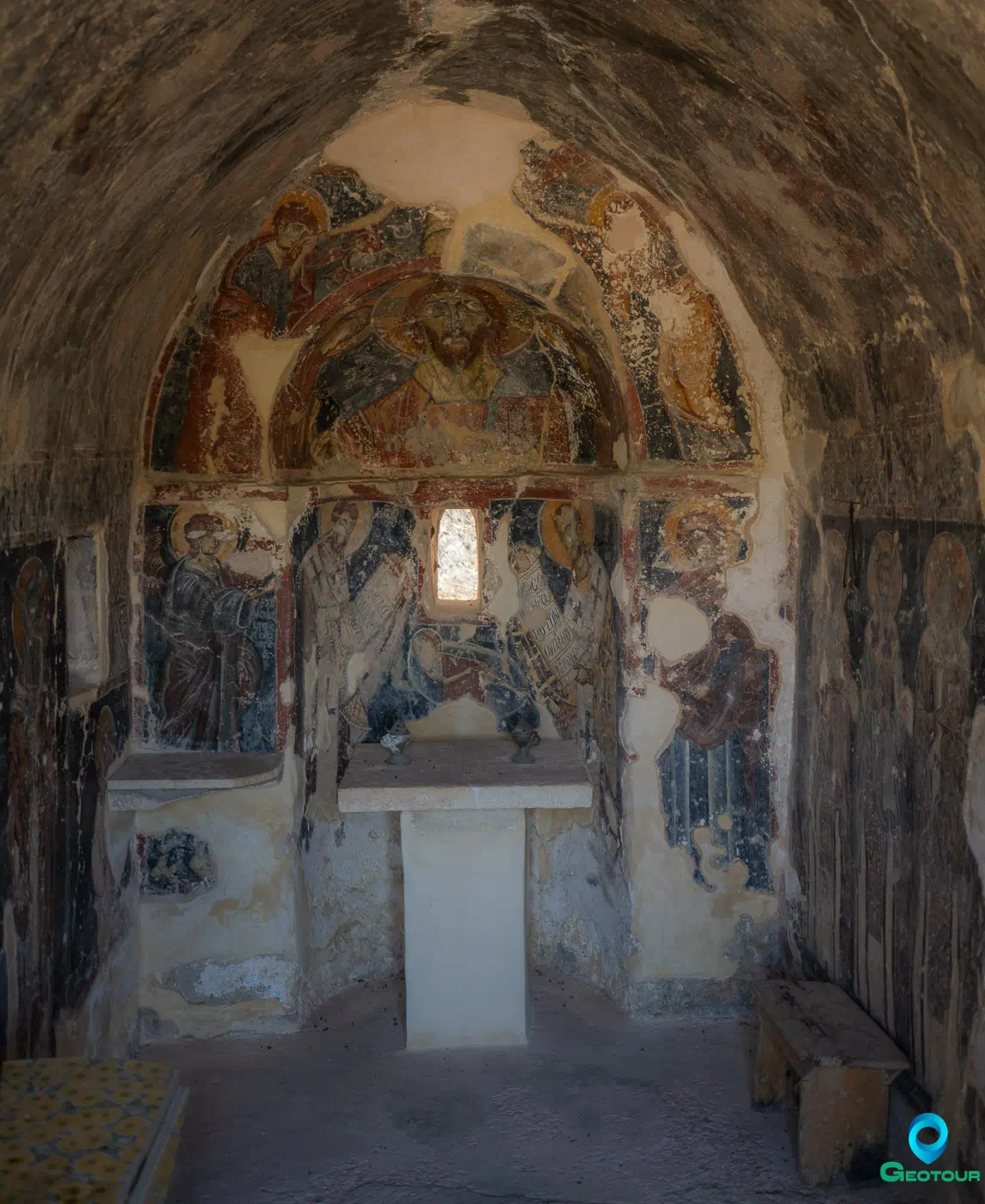
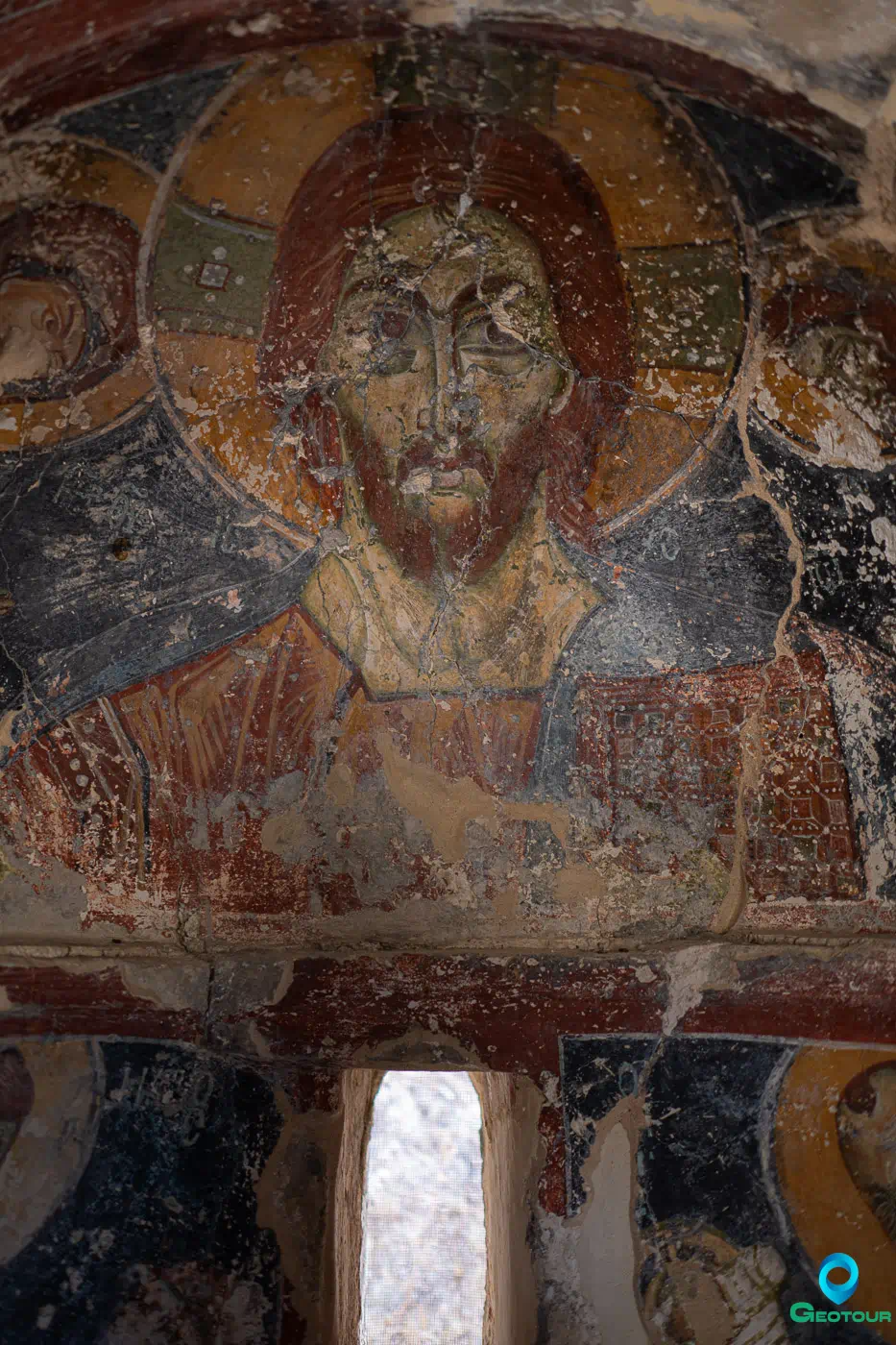
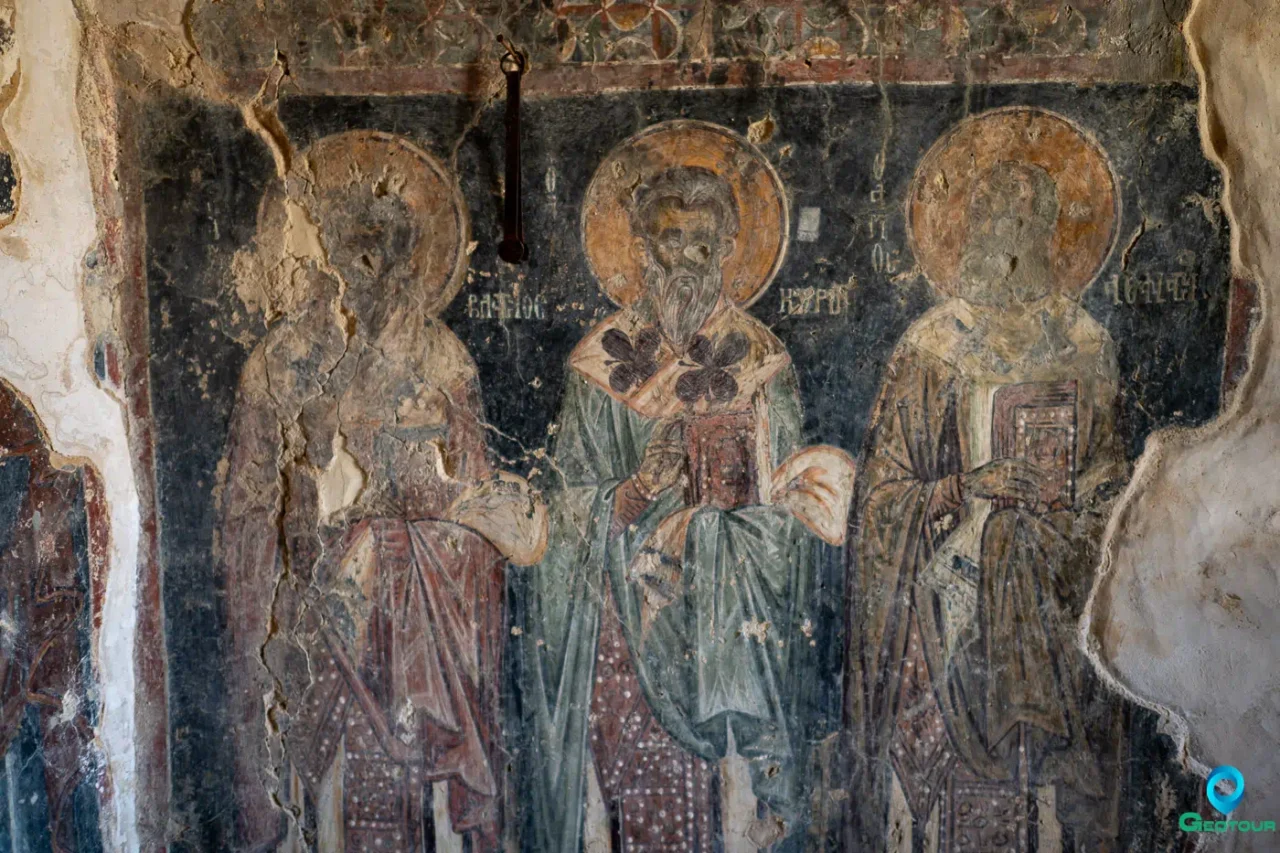
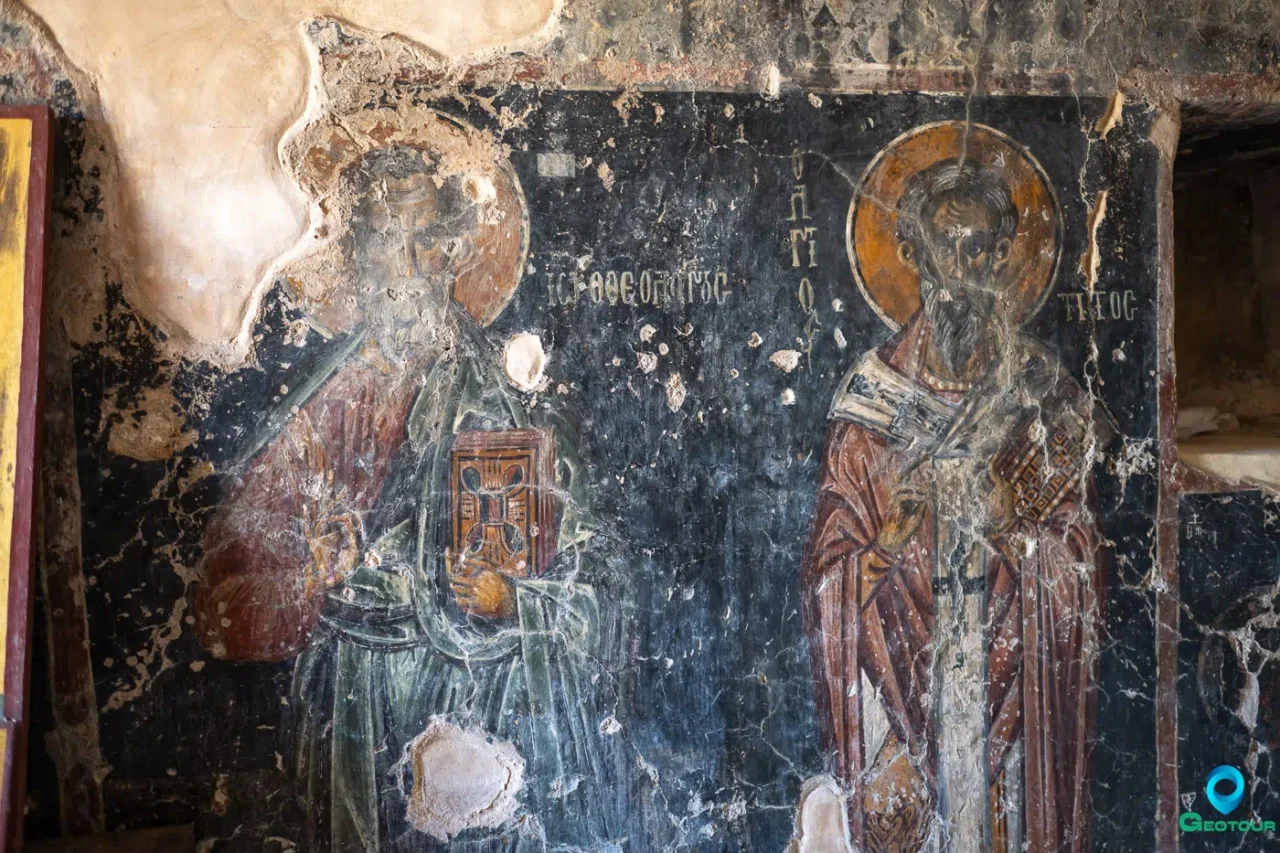
Agia Paraskevi is a small, single-room church located in a valley south of the village of Aitania, in the Heraklion regional unit of Crete. The church is accessed by a steep dirt road from the village. The surrounding area is notable for its tall cypress trees. A spring, known as Lazarakis Spring, used to exist near the church but has since dried up.
The church dates back to the 14th century (Venetian period), but evidence suggests an earlier construction phase during the Byzantine period. The interior walls are decorated with well-preserved frescoes from the 14th century, depicting various saints and scenes from the Bible. Some of the identifiable figures include Saint Vlasios, Saint Titus, Saint John the Theologian, military saints, and scenes from the Theotokos cycle. The sanctuary features classic motifs of concelebrating hierarchs, the Protomartyr Stephen, the Annunciation, and Christ.
The exterior of the church is simple, featuring a buttress for support and a stone table used for the blessing of bread during festivals. Local tradition holds that the church was once associated with miraculous healing, with those suffering from ailments performing a ritual around the church and then collecting holy water that appeared within. This practice reportedly continued until the 1970s.
The church was restored in 2003.
Frescoes
The frescoes inside the church are of particular interest, as their style suggests they were either painted in two phases or by different artists. The sanctuary, for example, has a distinct style from the rest of the church. The conch of the sanctuary depicts Christ as the Great High Priest, a rare motif for this location. Also rare is the depiction of the Melismos within the conch, framed by concelebrating hierarchs.
The eastern wall features a scene from the “Epitaphios Threnos” (Lamentation) and the “Annunciation.” The arch depicts scenes of the Nativity and the Baptism.
The north wall, located within the sanctuary, depicts Saint Titus and Deacon Stephen, while the south wall shows Saint Vlasios, Saint Cyrus, and Saint Athanasios the Great.
The arch of the main church depicts scenes from the Dodekaorton, including the Transfiguration, the Presentation of Jesus at the Temple, and the Entry into Jerusalem. The south wall depicts Christ, Saint Nicholas, and Saint Nicholas of Myra. The north wall shows Saint George, Saint Demetrius, and Saint John the Theologian. The upper part of the west wall features the prophets David and Solomon, while lower down is Saint Anastasia.
Details:
- Construction Period: 14th century (with evidence of earlier Byzantine construction)
- Location: Aitania – Agia Paraskevi area, south of the village
- Dimensions: Small, single-room church (specific dimensions not provided)
- Historical Significance: Frescoes, local traditions of miraculous healing
- Current Status: Restored, open to visitors (accessibility may be difficult due to the dirt road)
References













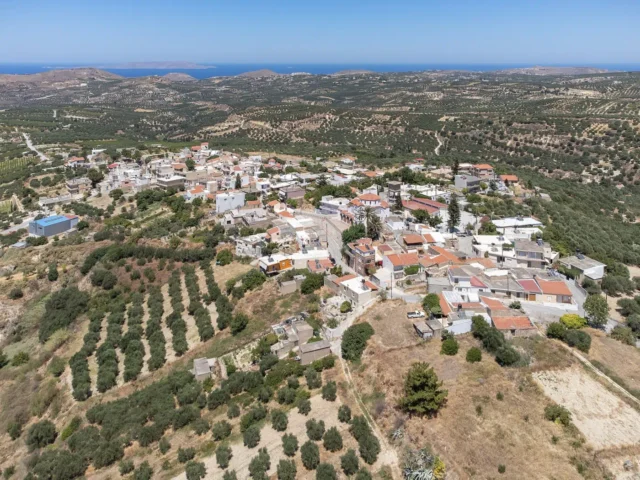

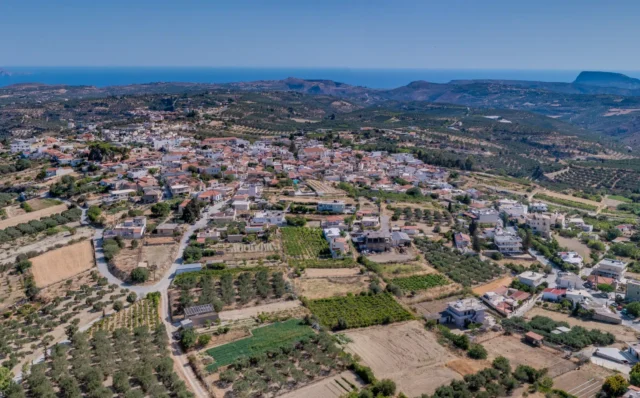



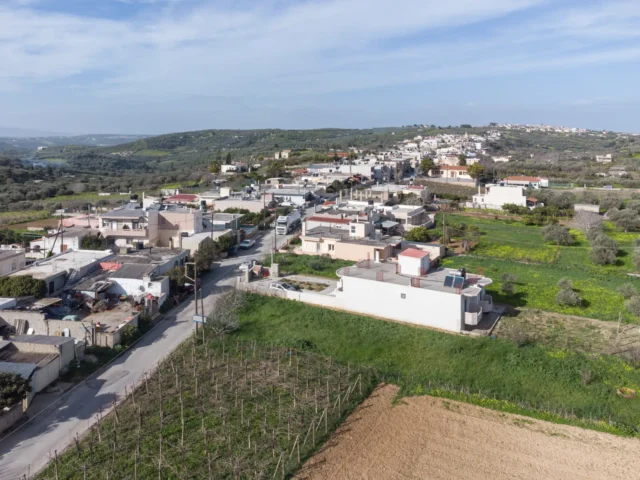

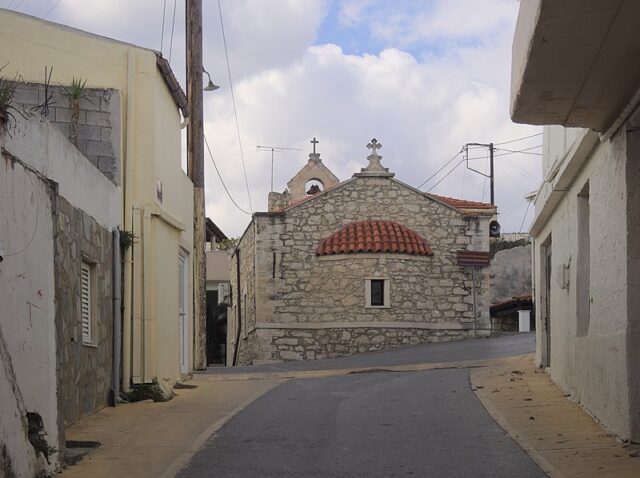
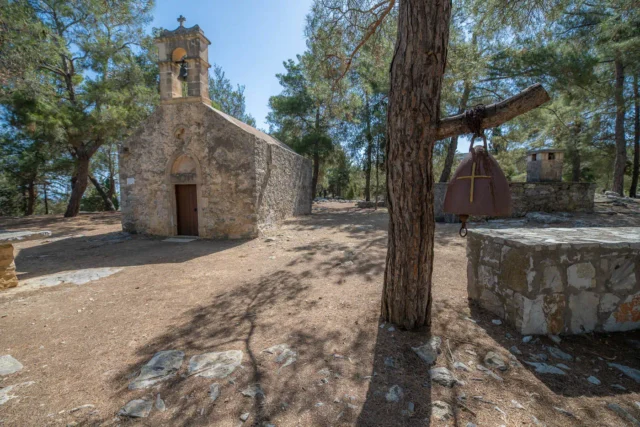
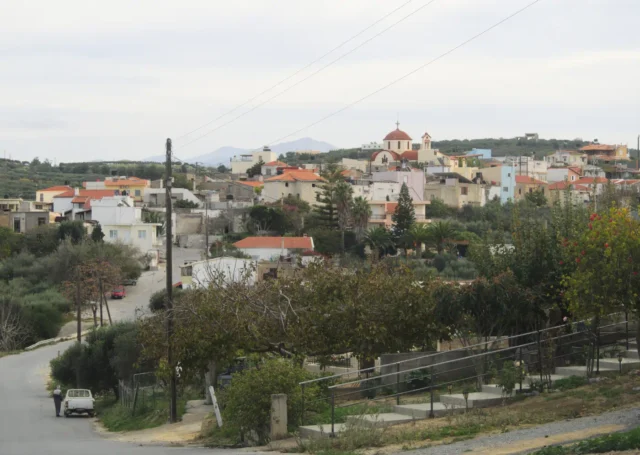

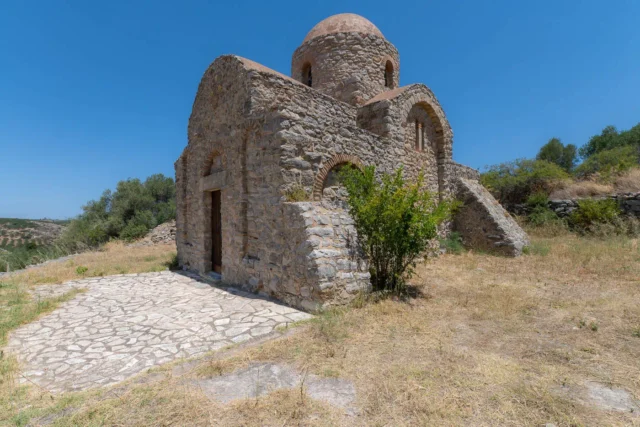



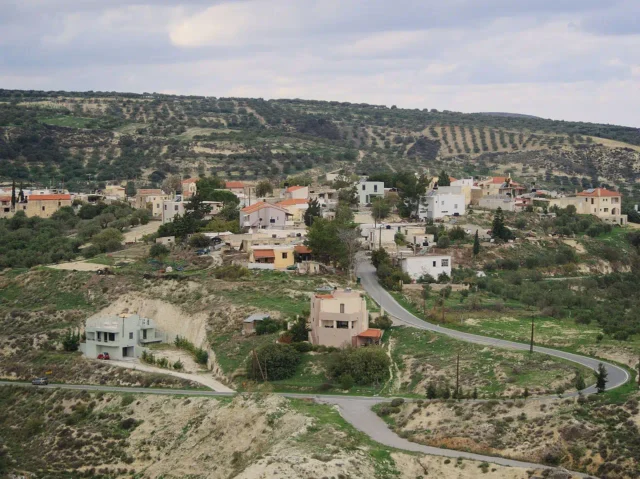
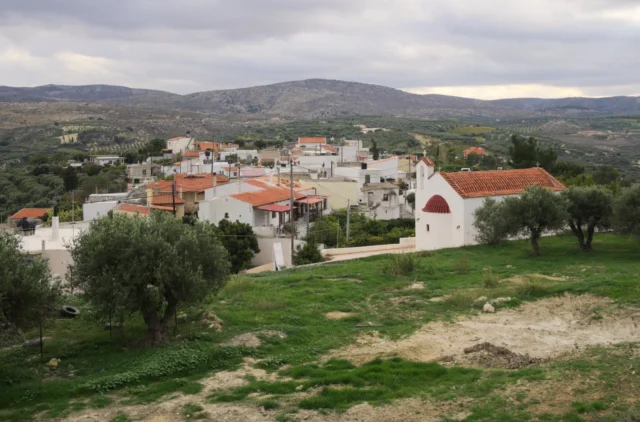
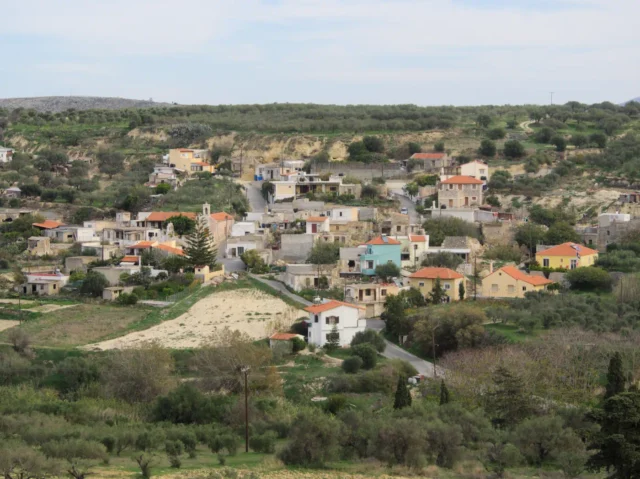
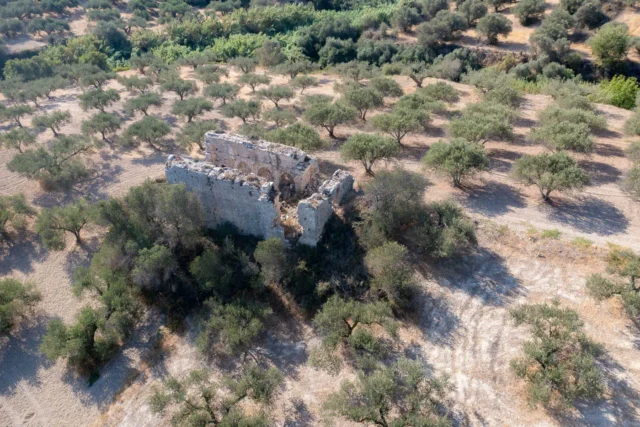

There are no comments yet.